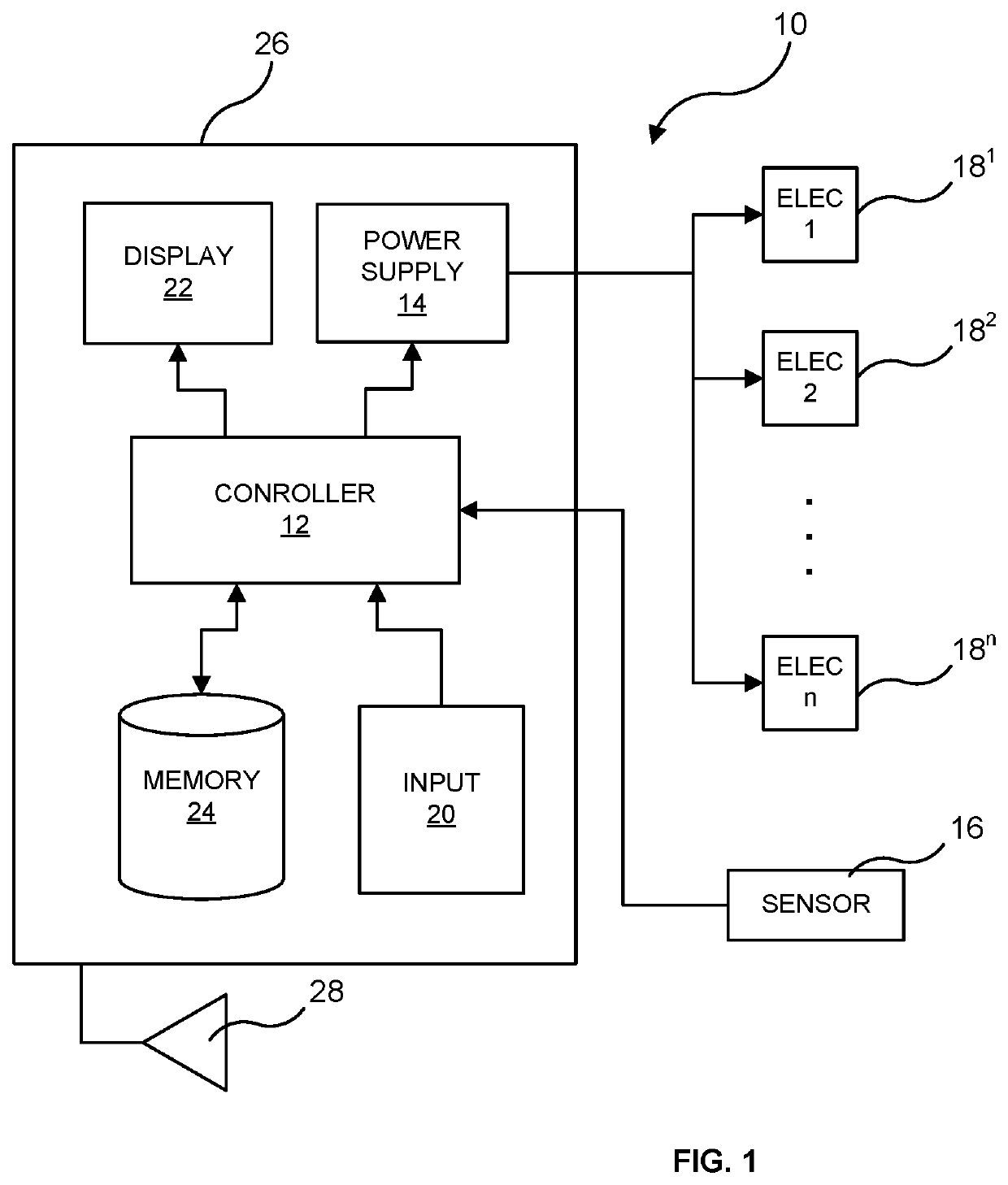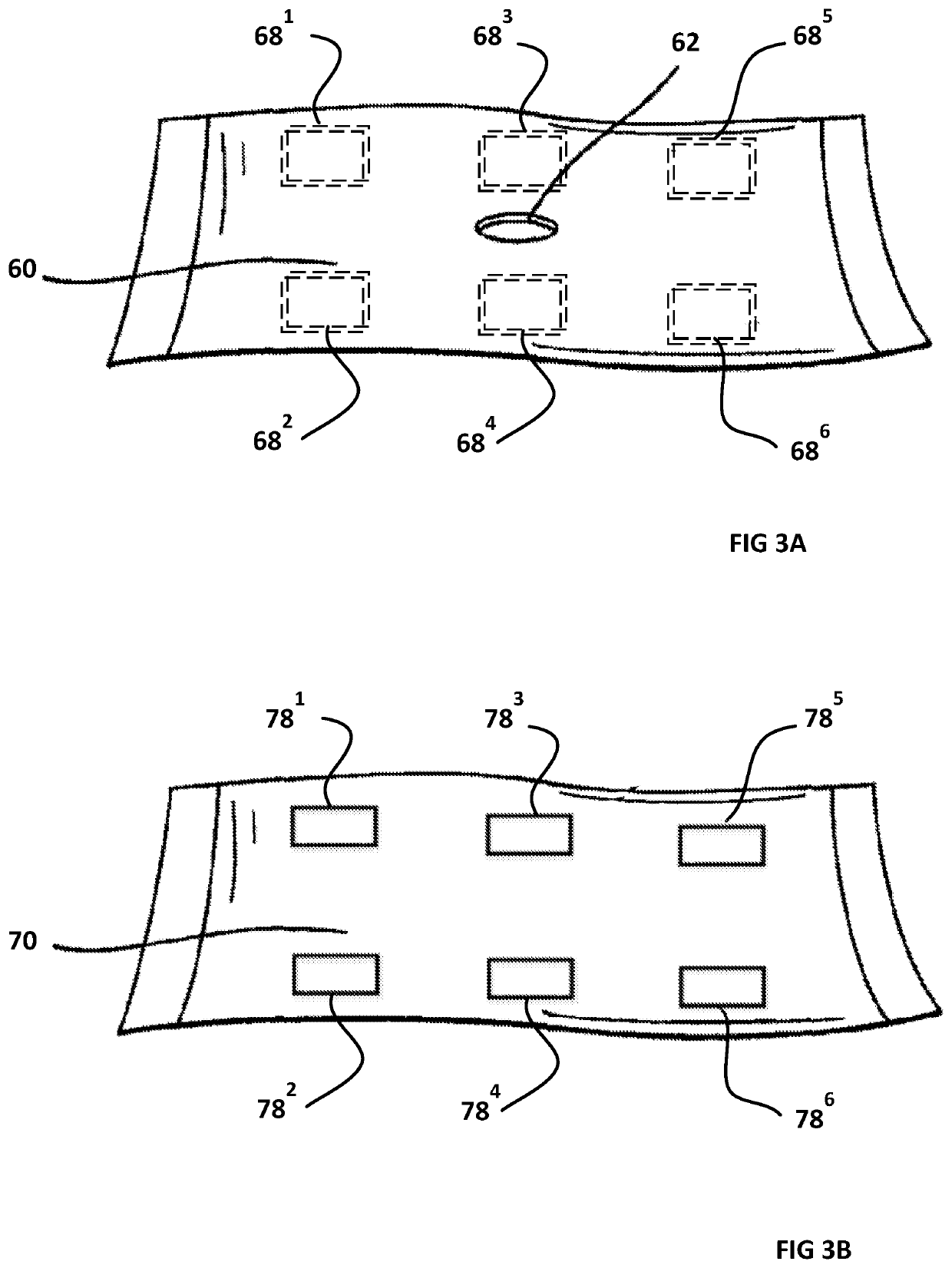Medical wound covering employing electrical stimulation to control blood flow
a technology of electrical stimulation and medical wounds, applied in the field of medical wounds, can solve the problems of increasing the risk of infection and accidental injury, crowding of the area, and unavoidable bleeding, and achieve the effect of reducing (or at least reducing) the need to manage excessive fluid flow
- Summary
- Abstract
- Description
- Claims
- Application Information
AI Technical Summary
Benefits of technology
Problems solved by technology
Method used
Image
Examples
Embodiment Construction
[0036]As used herein, the terms “electrode” and electrodes” encompass electrical coils, electrical plates, electrical conductors, conductive fabrics and gels, and any other conductive materials and devices.
[0037]Referring to the figures in detail and first to FIG. 1, there is shown an exemplary embodiment of a system (10) for controlling blood flow in a surgery patient or other individual with a wound requiring the active control and prevention of blood loss therefrom. The system (10) includes a controller (12) and a stimulation power supply (14) in communication with the controller (12).
[0038]The system (10) also includes a plurality of electrodes (181,182 . . . 18n) in electrical communication with the stimulation power supply (14). The plurality of electrodes (181,182 . . . 18n), the location of which are described further below, are arranged to supply electrical impulses that cause activation of sympathetic and / or parasympathetic nerves when supplied power by the stimulation pow...
PUM
 Login to View More
Login to View More Abstract
Description
Claims
Application Information
 Login to View More
Login to View More - R&D
- Intellectual Property
- Life Sciences
- Materials
- Tech Scout
- Unparalleled Data Quality
- Higher Quality Content
- 60% Fewer Hallucinations
Browse by: Latest US Patents, China's latest patents, Technical Efficacy Thesaurus, Application Domain, Technology Topic, Popular Technical Reports.
© 2025 PatSnap. All rights reserved.Legal|Privacy policy|Modern Slavery Act Transparency Statement|Sitemap|About US| Contact US: help@patsnap.com



